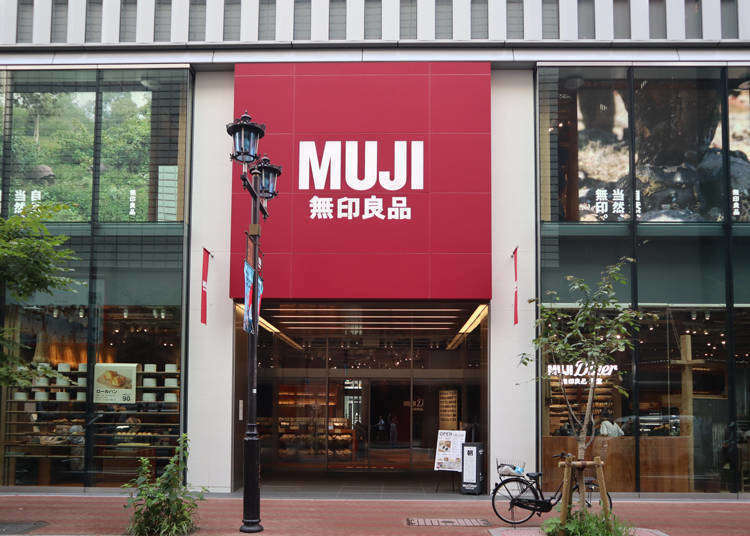
Nippon Budokan, a large indoor arena for sporting events in the middle of Tokyo will be the main venue for judo and karate matches during the 2020 Olympics. Surrounding the building is the beautiful natural greenery of the Imperial Palace.
Besides large-scale martial arts tournaments and national events, the gymnasium also opens its doors to concerts and other important activities, attracting a steady flow of visitors throughout the year.
With such a great volume of visitors, it comes as no surprise that plenty of other places of interest have popped up in the building's vicinity as well, such as sightseeing spots and shopping centers, to cater to the needs of these visitors. Here are some of our recommended places to go for great sights, great food, and a memorable place to stay!
(1) Imperial Palace Area: Chock full of amazing sights

About a 1-kilometer (0.6 miles) walk from the Budokan is the Imperial Palace and its surroundings, collectively a major place of interest for tourists from all over the world. Located within its premises are historic buildings over 400 years old, lovely blooms that are tended to all-year-round, and an abundance of natural sights. So much to see, so little time!
Best part? It's all free! So there's no need to worry about going over budget here - especially if you're traveling in a large group!
Three must-visit major tourist hotspots in the Imperial Palace area
The area is largely divided into three main parts: Kokyo Gaien National Garden and The East Gardens of the Imperial Palace, which are both free to enter, and the Kokyonai area which only allows entry for those who made an advanced reservation. The large National Garden is full of greenery to enjoy. Benches have been placed all around the park for tired walkers to rest their feet and take in the sights at their own pace.
Kokyo Gaien National Garden

Some of the best views you can find in Kokyo Gaien National Park include famous artifacts like the Statue of Kusunoki Masashige, which was chosen as one of Tokyo's top three bronze statues; the beautiful Nijubashi Bridge, one of the bridges stretching from the plaza in front of the palace to the palace building; and Sakurada Gate, the largest city gate in Tokyo still in existence.
Here are some interesting trivia about these places of interest. Nijubashi Bridge and the Fushimi Keep that was relocated from Kyoto in the year 1628 is almost always depicted as a set because of how well they beautify the landscape together.
The bridge is usually off limits, but on special days like the Emperor's Birthday or New Year's Day, regular folks are allowed to walk over it during their congratulatory visits. Moving on to the Sakurada Gate, the vivid contrast between its dull stone walls and white earthen walls makes it a very popular place for commemorative photographs.
The structure is two-tiered, consisting of an inner wall and outer wall. The city of Tokyo can be seen in the distance from the midway point of the wall.

The gate was repaired in 1612 and is nowadays known to be the top city gate still in existence in Japan. However, it did suffer damages during the Great Kanto Earthquake in 1923 and was reinforced with steel and earthen structures after that. There is a certain exotic charm to be found in the striking contrast between imposing stone walls and pure white earthen walls. No wonder people love to take photographs in front of the gate! The structure itself is two-tiered, consisting of an inner and outer gate. From the gate's midway point, you can admire the streetscape of Tokyo in the distance.
The East Gardens of the Imperial Palace
The must-see spot in this area has got to be the verdant Ninomaru Garden, where the site of Edo Castle's Keep, Japan's largest castle keep is situated.

Ninomaru used to be the Shogun's vacation villa. It is a beautiful stroll-through garden about 20,000 square meters (215,000 square feet) wide. In February, plum blossoms are aplenty; April is heralded by an abundance of kurume azaleas; May is all about the satsuki azaleas; June boasts of Japanese irises; and maple leaves are the draw in autumn.
Whatever the month may be when you're visiting, you're guaranteed to be greeted by the lovely flora and fauna in the garden.
Speaking of fauna, a lot of fish, turtles, and small animals call the area home, including rare species of koi fish such as the butterfly koi. Ninomaru Grove is another highlight of the area. The foliage and underbrush here are so thick, it's like a forest in the city! Definitely visit if you love nature.
Remains of Edo Castle's Keep: The largest castle keep in Japan

Edo's Castle Keep is a site bearing what remains of the stone wall portion of the former Edo Castle, and it is Japan's largest castle keep. Standing at a height of about 11 meters (36 feet) and measuring more than 40 meters (130 feet) long in all directions, its powerful and impressive presence is best experienced personally!
Edo Castle burned down in a fire in the year 1657, and marks of that disaster can still be seen on the stone wall portion today. Walk up the slope that leads to an observatory deck built on the space where Edo Castle used to stand and enjoy a 360 degrees panoramic view of the greenery in the garden with the skyscrapers of Tokyo in the background.
Kokyonai: Make an advanced reservation to have a peek inside the palace itself!
Guided tours are available for the Imperial Palace if an advanced reservation is made. You may make the reservation on the spot at the reception or via the internet. Online reservations can be made in English, French, Spanish, Mandarin Chinese, Korean, and a few other languages as well.
There are two slots per day for guided tours - one in the morning at 10:00 a.m. and then again in the afternoon at 1:30 p.m. Every 1st day of the month, slots are opened for booking up to the next month within a one-month range. Since this is a hugely popular tour, we highly recommend booking on the day the dates are released for the best chance at grabbing a slot.
Before joining the tour, you will be asked to produce personal identification in the form of a driver's license or passport, so don't forget to bring them along with you! There's also an official Imperial Palaces Guide app that supports multiple languages such as English, French, Spanish, Mandarin Chinese, and Korean. You never know when the app may come in handy, so be sure to download the app beforehand as well!
As you continue on your way in the guided tour, you'll eventually pass by some shops selling unusual souvenirs in the form of nihonshu (Japanese alcohol), snacks, eating utensils, and furoshiki (Japanese-style wrapping cloth) - all bearing the Chrysanthemum Seal of Japan's imperial family. Since these items are only available here, definitely consider buying something back for keepsake. Note that you won't be passing by these shops again as you continue on the tour, so you're going to have to make some quick decisions on the spot!
-

-
Address
1-1, Chiyoda, Chiyoda-ku, Tokyo, 100-8111
View Map -
Nearest Station
Nijubashimae "Marunouchi" Station (Tokyo Metro Chiyoda Line)
10 minutes on foot
- Phone Number 03-3213-1111
-
Address
1-1, Chiyoda, Chiyoda-ku, Tokyo, 100-8111
-
 Wadakura Fountain Park
Wadakura Fountain Park -
 The National Museum of Modern Art, Tokyo
The National Museum of Modern Art, Tokyo -
 National Museum of Modern Art Crafts Gallery
National Museum of Modern Art Crafts Gallery -
 Museum of the Imperial Collections
Museum of the Imperial Collections
(2) Café 1894: A castle-like cafe and bar

Café 1894 is located five minutes on foot from Tokyo Station on the JR Lines, inside Mitsubishi Ichigokan Museum, a beautifully restored building designed by Josiah Conder that was constructed in 1894. Like the building, the collections inside are mainly Western art from the late 19th century by artists like Lautrec, Redon, and Vallotton.

Inside the museum's palace hall-like interior is where you can find the quaint Café 1894. Back in 1894, the space where the cafe now occupies was actually used as a banking hall, and the decor has been restored to the way it originally was, giving it an antiquated but dignified look. It's not every day you get to eat and drink in a cafe space reminiscent of a vintage bank, and the experience will almost certainly be like an adventure in itself.

"Cappuccino (650 yen, tax excluded)" is a popularly ordered item here. Check out the latte art of the cafe's impressive logo! There's also a special menu created in collaboration with the exhibitions in the museum featuring food made with concepts or colors inspired from certain artwork on display. What a beautiful way to dine! Try the "Café 1894 Garden Plate Lunch (1,500 yen, tax excluded)" for lunch or one of their French cuisine-based dishes for dinner, alongside a glass of good wine for maximum enjoyment.
-

-
Address
2-6-2, Marunouchi, Chiyoda-ku, Tokyo, 100-0005
View Map -
Nearest Station
Tokyo Station (Tokaido Shinkansen Line / Hokkaido Shinkansen Line / Tohoku Shinkansen Line / Akita Shinkansen Line / Yamagata Shinkansen Line / Joetsu Shinkansen Line / Hokuriku Shinkansen Line / JR Tokaido Main Line / JR Yokosuka Line / JR Sobu Main Line / JR Sobu Main Line (Rapid) / JR Keihin-Tohoku Line / JR Yamanote Line / JR Chuo Main Line / JR Keiyo Line / JR Ueno Tokyo Line / Tokyo Metro Marunouchi Line)
5 minutes on foot
- Phone Number 03-5777-8600
-
Address
2-6-2, Marunouchi, Chiyoda-ku, Tokyo, 100-0005
-
 Marunouchi Building
Marunouchi Building -
 Shin-Marunouchi Building
Shin-Marunouchi Building -
 Marunouchi Oazo
Marunouchi Oazo -
 SPINDLE Shin-Marunouchi Building Store
SPINDLE Shin-Marunouchi Building Store -
 Tsuchiya Kaban Marunouchi store
Tsuchiya Kaban Marunouchi store -
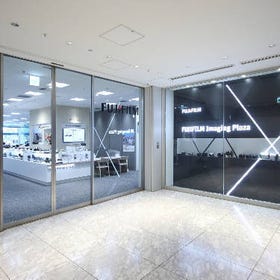 FUJIFILM Imaging Plaza TOKYO
FUJIFILM Imaging Plaza TOKYO -
 SKYBUS TOKYO
SKYBUS TOKYO -
 Mitsuo Aida Museum
Mitsuo Aida Museum -
 Tokyo City i
Tokyo City i -
 Marunouchi Naka-Dori Street
Marunouchi Naka-Dori Street
(3) KITTE: Japan Post Tower Shopping Mall with an unbeatable night view

KITTE is a commercial facility in front of Tokyo Station operated by Japan Post. Part of the former Tokyo Central Post Office was preserved, renovated, and opened as a shopping center in March 2013. The concept behind the facility is "Feel Japan" - that is, feel the pleasantness, profoundness, and joyfulness Japan has to offer to everyone. To that end, signature goods from all over the island nation are featured in the roughly 100-tenant strong complex. Shops here sell virtually everything from general wares to restaurant food.
The building consists of one basement floor and six floors aboveground, and each floor has its own interior design theme crafted with carefully chosen materials and decorations. For something interesting, head to the 4th floor of the building to take a tour of the former postal chief's office, which has been preserved for posterity.
Panoramic night view of Marunouchi station building and the surrounding skyscrapers from the rooftop garden!

There's a rooftop garden in the building called KITTE Garden which is known to be one of the best places to go for Tokyo night views. From the garden, visitors can look out at the train station below and see regular trains as well as the Shinkansen coming and going, making it an especially irresistible hotspot for railway enthusiasts.
As the sun sinks into the horizon, the Marunouchi building of Tokyo Station lights up and stands out in contrast against the backdrop of skyscrapers around it. The surreal atmosphere lasts until 9:00 p.m., when the illuminations are turned off. Whether in the day or at night, the spacious garden is a romantic place to visit for some revitalizing greenery and breeze. It's definitely an ideal place to relax and unwind in after a nice dinner in one of the eateries of the mall below.
-

-
Address
Marunouchi 2-7-2, Chiyoda-ku, Tokyo, 100-7090
View Map -
Nearest Station
Tokyo Station (Tokaido Shinkansen Line / Hokkaido Shinkansen Line / Tohoku Shinkansen Line / Akita Shinkansen Line / Yamagata Shinkansen Line / Joetsu Shinkansen Line / Hokuriku Shinkansen Line / JR Tokaido Main Line / JR Yokosuka Line / JR Sobu Main Line / JR Sobu Main Line (Rapid) / JR Keihin-Tohoku Line / JR Yamanote Line / JR Chuo Main Line / JR Keiyo Line / JR Ueno Tokyo Line / Tokyo Metro Marunouchi Line)
- Phone Number 03-3216-2811
-
Address
Marunouchi 2-7-2, Chiyoda-ku, Tokyo, 100-7090
-
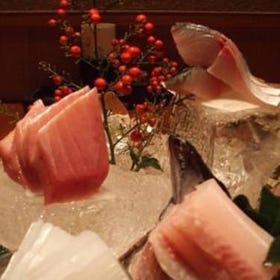 Gimpei Kittemarunouchiten
Gimpei Kittemarunouchiten -
 The Tokyo Station Hotel
The Tokyo Station Hotel -
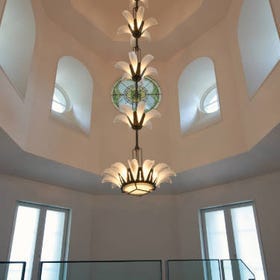 Tokyo Station Gallery
Tokyo Station Gallery -
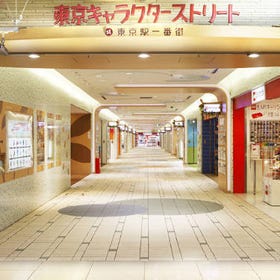 Tokyo Character Street
Tokyo Character Street -
 Tokyo Ramen Street
Tokyo Ramen Street
(4) Muji Hotel: A rather accommodating Muji shop

Muji is a Japanese general goods brand that many foreigners are familiar with. Right in the heart of the Ginza district is Muji Ginza, Muji's global flagship building dedicated to showcasing the charms of Muji products and the culture of the shopping district it resides in. It's also where Japan's first ever Muji Hotel is located.

The hotel's front desk can be found on the 6th floor of the building, and the wall behind it has been put together with cobblestones that streetcars used to run on as they traversed the streets of Tokyo over 100 years ago. The gritty-looking wall thus exudes olden vibes that are deeply rooted in the passage of time, inviting onlookers to admire the sight along with the history behind it. Rooms in the hotel are designed to be "anti-gorgeous, anti-cheap" in order to provide travelers with a cozy feel that makes them feel like their trip is merely an extension of their daily life routine.

Depicted in this photograph is guestroom type C, which consists of a double bed on a slightly raised platform. This is the most common room type among the 44 rooms of the hotel, although there are plenty of other types. For example, type E is a twin bedder with a slightly raised tatami mat platform in the edge of the room. Type G has bunk beds and is highly recommended for family groups. Type I (only one room available) comes with a tatami lounge area and a wooden bathtub.
In total there are 9 types of room available for selection. Most of the items and amenities in the hotel rooms are Muji products, so if you find yourself falling in love with some of them after a night or two of use, you're welcome to head down to the store to purchase one to bring back for permanent use at home!
Muji Ginza - a walk-in encyclopedia of Muji goods

The intimidating volume of general goods and products on display in Muji Ginza is evidence of its status as the brand's global flagship store. The 2nd floor is the fashion section where clothing for ladies and men are on display. Other products include bags and shoes. The 3rd floor focuses on socks, innerwear, health and beauty, stationery, office goods, bicycles, and travel products. On the 4th floor, you'll find items for the living room and kitchen, tableware, children's clothing, and maternity wear. Try the 5th floor for products for the bedroom, storage, home electronics, lighting, cleaning, and washing.
A different taste of Muji
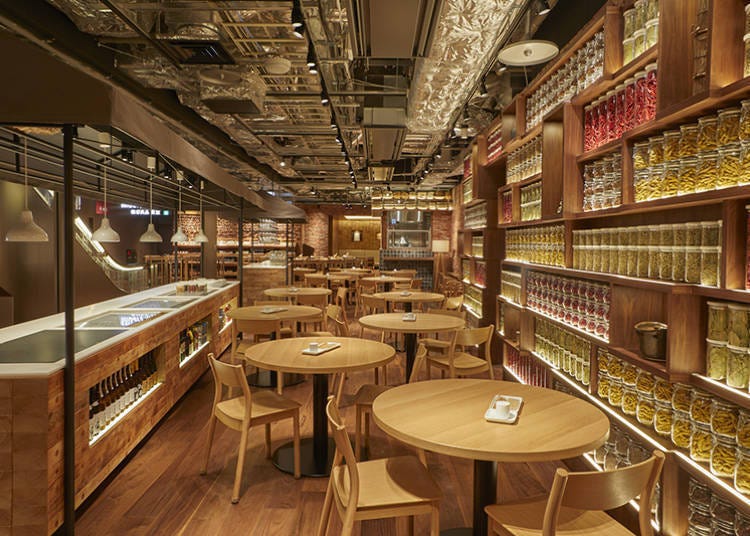
Don't forget to check out Muji Diner as well, an eating space serving up plenty of vegetable-based food alongside fish, meat, and the occasional game. The area contains of shops such as Washoku Restaurant WA, a Japanese food place that uses lots of seasonal ingredients in their delicious obanzai set meals, Marche, bakeries, juice stands, and Atelier Muji Ginza Salon, a trendsetter in design culture that also serves cocktails at the counter. With so much variety, there's bound to be a great tasting Japanese meal waiting for you here, no matter your preference!
Muji Diner is located on the basement floor of the building. During morning hours (7:30 a.m. – 11:00 a.m.), there are breakfast goodies like fresh tofu porridge, rice ball with miso soup, and toast with scrambled eggs available for the very reasonable price of 500 yen. When lunch times comes around, you can look forward to daily lunch sets that use fresh fish delivered from Odawara.
As for dinner, check out items such as small side dishes served chilled, seasonal fried foods, or large platters of meat or fish that are bound to fill your tummy after a day of activities. Shop and eat conveniently in one building without having to worry about having to run out into rain or bad weather to get to your accommodation in time, because your hotel is just above the shopping center! Choosing to stay in Muji Hotel for an all-in-one experience is a perfectly valid way to enjoy and enhance your Tokyo trip!
-
Muji Hotel Ginza無印良品 銀座/MUJI HOTEL
- Address 3-3-5 Ginza, Chuo-ku, Tokyo-to
- Phone Number 03-3538-6101
Hours: B1 Muji Diner 7:30 a.m. – 10:00 p.m. (last order 9:30 p.m.); 1F to 6F 10:00 a.m. – 9:00 p.m.
-
 Ginza Natsuno
Ginza Natsuno -
 Lotte Duty Free Ginza store
Lotte Duty Free Ginza store -
 TORISUKI Tokyupurazaginzaten
TORISUKI Tokyupurazaginzaten -
 Shinfuen
Shinfuen -
 NISSAN CROSSING
NISSAN CROSSING -
 Tokyo Kyukyodo - Ginza Main Shop
Tokyo Kyukyodo - Ginza Main Shop -
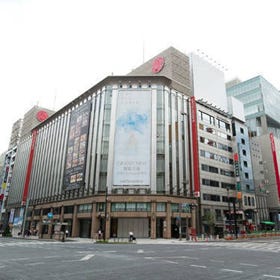 Mitsukoshi Ginza
Mitsukoshi Ginza -
 Soratoniwa GINZA, Matsuya Ginza
Soratoniwa GINZA, Matsuya Ginza -
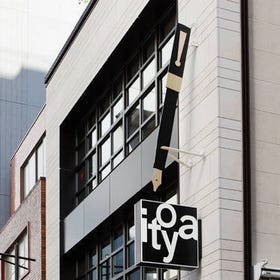 K.Itoya
K.Itoya -
 Matsuya Ginza
Matsuya Ginza
- Area
*Prices and options mentioned are subject to change.
*Unless stated otherwise, all prices include tax.
Popular Tours & Activitiess
Recommended places for you
-

Senso-ji Temple
Temples
Asakusa
-

The Tokyo Station Marunouchi Building
Landmarks
Tokyo Station
-

Ueno Zoo (Ueno Zoological Gardens)
Zoos, Aquariums & Botanical Gardens
Ueno
-

TOKYO SKYTREE®
Landmarks
Ryogoku / TOKYO SKYTREE(R)
-
Events

Tokyo Tower
Landmarks
Roppongi
-

The Imperial Palace
Other Architecture
Tokyo Station
-
Ad

(Opening in Jan 2026) 'THE SUMO LIVE RESTAURANT HIRAKUZA GINZA TOKYO!' 5 Exciting Ways to Experience the World of Sumo!
-

This Winter, Godzilla Takes Over Haneda Airport
by: Guest Contributor
-
Ad

Preserving the Beauty of World Heritage Site Shirakawa-go for the Future Through Responsible Travel
-

How to Get Don Quijote's Exclusive 2025-2026 Winter Gift (+Tax-Free Savings)
-

Strawberries, Style, and Tokyo’s Coolest Neighborhood: Winter Afternoon Tea in Kichijoji
by: Guest Contributor
-

First Japan Cherry Blossom 2026 Forecast Announced! Here's When & Where to See Sakura in Japan
Inspiration for Accommodations
-

Enjoy Mt. Fuji from the Comfort of Your Room! Recommended Ryokan with Mt. Fuji View
-

Stay Near the Cherry Blossoms! Hotels for Cherry Blossom Viewing in Tokyo
-

Family-Friendly Hotels with Free Shuttle to Disneyland: Convenient Access for a Magical Stay
-

Top Ranked Hakone Hotels with Mt. Fuji View: Enjoy Stunning Scenery from Your Private Space
-

Convenient Tokyo Hotels with Airport Shuttle: Ideal for Families and Heavy Luggage
-

Stunning Tokyo Tower View Hotels: Enjoy Spectacular Scenery from Your Private Space
-

Convenient Asakusa Hotels with Kitchens: Ideal for Extended Family Visits
-

Experience Luxury: Hakone's 10 Best Five-Star Accommodations
-

Enjoy Mt. Fuji Autumn Leaves! Top Hotels Near the Popular Autumn Leaves Corridor
-

Experience Hakone Fall Foliage from Your Room with Stunning Views
-

Best Squid Sashimi in Tokyo: Inside Tokyo Ika Center - One of the City's Best Seafood Restaurants!
-

Sanrio Cafe Ikebukuro Opens in Tokyo! We're In Love With the Sweets & Original Merch
-

Ikebukuro Station Area Guide: Top 15 Spots When You Escape the Station's Maze!
-

Spending Wonderful Time Alone in Shibuya - Free Cosmetics and a Hundred-Yen Bus!
-

Hot Food Trends for 2018: Check out Japan's Dish of the Year!
-

Stylish and functional: 4 of Shibuya's best cafés
- #best ramen tokyo
- #what to buy in ameyoko
- #what to bring to japan
- #new years in tokyo
- #best izakaya shinjuku
- #things to do tokyo
- #japanese nail trends
- #what to do in odaiba
- #onsen tattoo friendly tokyo
- #daiso
- #best sushi ginza
- #japanese convenience store snacks
- #best yakiniku shibuya
- #japanese fashion culture
- #best japanese soft drinks














